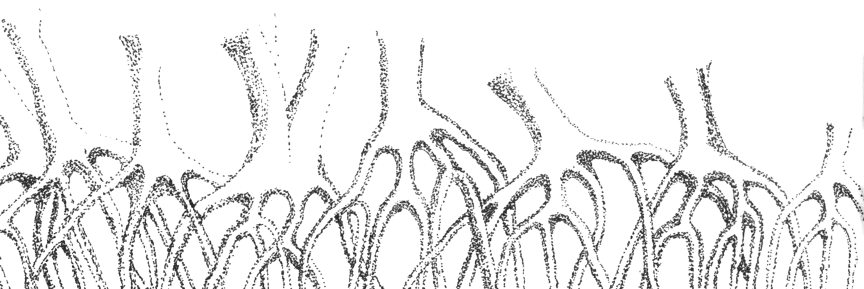Memoir
Ester Tapia
During the first semester of 1977, upon the invitation of Dr. Ed and Edith Tiempo, I attended the Silliman University MA Creative Writing Program on a scholarship. I was 21, and it felt like I was in a special bubble, where I spent hours and days between classes in the library where I soaked in the works of European poets in books that can only be found at Silliman University. Midterm, I had a series of asthma attacks and had to stop attending classes. When I left Dumaguete, I went to Marj’s house in San Jose and deposited with her a box of clothes and books, all irrelevant and dispensable, with the promise to get them back as soon as I got better. However, I got pregnant, and my frail health prevented me from returning to Dumaguete. Shortly after, Marj and her family moved to Manila, where she started teaching at De La Salle University. In my mind, that box represents a burden that Marj carries for me to this day: the burden of the promise of talent, however slight and fragile.
For this is who she is. She was and is always looking to nurture talents that may have fallen, so to speak, on thornbushes and waysides where there is little soil. Apart from SU and the small group of young poets in Cebu, mostly male, with whom I hung out, there is little ground that could give writers a break. Our small group sent poems to Focus Philippines, Free Press, Mr and Ms. Magazines. We also got rejection letters. I remember when we opened envelopes with the names of magazines on the sender’s space -- gingerly, hoping against hope. Then in 1992, the Women in Literary Arts (WILA-Cebu) was born.
The best thing I have learned from Marj as an ever-beginning poet—(for that is what I think and I am lucky, or so I’d like to think, I will always be a beginner poet—and how I wish, I wish that I would always see the world with a beginner’s eyes, never dimmed by boredom, insouciance, rationality or indifference) is how to eat poems, think of poems, listen to poems.
I guess this is her forte, thinking of poetry, listening to a poem, and finding the core of its being, the logic and logical illogic of its images, and those notes which linger long after the last words have been imprinted in the mind, heard, or spoken. For some years now, Marj and I have been exchanging poems by email. She shows me her poems, and I show her mine. I showed her the poem I submitted to this Festschrift, “Sa Akong Pandungog si Saint-Säens.” The first draft of this poem was entitled “Paminawa.” It was centered on the experience of a woman who listens to a mother’s voice singing a lullaby with a tune akin to that of Saint-Saens’ the Dying Swan. In the draft, I had written a line that states that the woman is, unknowingly, the best student of the great master. Marj had written to me that the draft was a colonialist poem. We have exchanged a few WhatsApp messages, and I saw what she meant: that the poem, as it was written, had the after-taste of the colonial, the fallacy of attributing to Western masters the gift and genius of art like music when unknown artists or artisans in the margins are perceived as second-rate artists or, perhaps, plain nobody. That stings! I waited almost an entire year until I rewrote the poem to its current version. I did not want to give up the idea of Saint-Säens as the spark of the poetic experience—I try to be faithful to my own encounters. In the current version of this poem, I attempt to situate the recognition of the lullaby of the unknown mother against the country’s socio-economic realities. Marj said she liked it, as I had hoped she would.
Marj is a superb listener, as only a poet could be. If only I would not hesitate, knowing how little time she has left from teaching, mentoring, writing retreats, and raising her children, I would ask her to listen to all of my poems. Marj makes one see a range of realities and hear many possibilities in other poets’ poems. What could that be if not magic?
Marj’s poems in English and Cebuano shimmer with each word, punctuation, image, and tone. These are well-crafted poems without any guilt or excuse for being. They are simply and naturally there, like a mountain behind clouds, quiet as breath, as gentle as the breeze in the islands. Da sein is the gift of her poems, and readers have that sense of being in a graceful, flowing mantle when we read them.
Marj had listened to the poems I wrote from 2000 to 2005 when she sat as a panelist in a workshop organized by the Women in Literary Arts-Cebu, pro bono. Often, she paid for her own plane fare to be with us as well. She stayed with Erma in Guadalupe and in Martirez, Cebu City, where Erma lived with her close friend Cynthia. My output of the 2005 workshop was a suite of poems in Cebuano which tells of my experience when I viewed the Guggenheim Collection of surrealist painters in a museum in Bonn. The suite won first prize in the 2005 Komisyon ng Wikang Filipino Contest, category Cebuano Poetry. This competition no longer exists, unfortunately for Cebuano writers.
Marj has been with us, WILA members, since we started in the 1990s. She encouraged forming the women writers’ group when her own group of writers, WICCA, was founded in Manila. She mentors our women writers through many phases of our writing life, through workshops and conferences, and also through many jovial and not-so-pleasant occasions. WILA is a group of women writers that was once dubbed a family album group of writers, which might have been quite an apt description since the group started as a group of women friends who were more interested in friendship than poetry or literature. Back then, we were students of MA and Ph.D. in literature, aspiring to contribute to academic journals and work with rhyme and reason. Among us were writers of short stories and poems trying out different voices; ladies waiting for a twist in the plot, a character to walk into a coffee shop, or a clever line of poetry. What does it matter? We were all having a good time, and we still do, in workshops where we show each other stories and poems, like knitted jackets or patched quilts. We stayed in beach resorts loaned to us by appreciative friends, in cottages owned by local governments in Cebu, in 4-star hotels granting us huge discounts during low season, and in each other’s houses. And Marj was there. In the 90s, she was with us in Boljoon (Susan Lara and Lina Reyes were there too) when the brilliant poet Rene Amper was municipal mayor, who provided us rooms and fare; in Costabella Resort (Elsie Coscoluella was there) where we spent three writing women days and three sleepless talking women nights, trying out the small bancas under the moonlight; at the Taptap mountain resort workshop where Tina performed, eating rose petals. Faithful to her calling, she guided, criticized, talked, and cajoled the women into publishing anthologies, small books of poems, novels, and essays in Cebuano and English.
WILA’s literary bond with Marj naturally seeped into the realm of the personal. Marj was there when I got married the first time, had an annulment, and got married again. I remember meeting up with her in 1992 at what was once the plushest restaurant in Cebu City to talk about life changes. She got mixed up, at nobody’s fault, in many of the WILA members’ lives, even when these were trying and tragic. Gingging’s daughter Diday was lost at sea; Diday, one likely to be another Dumdum writer, was with us at the Costabella Resort, sitting close to her Mom in the workshop room. During this workshop, Marj pointed out Ana’s flawless fiction and poetry, her stories about falling in love, sex, and death. When Ana was at the ICU in the Chong Hua Hospital, WILA held meetings for several consecutive days at a restaurant in Ramos. Marj joined us by phone calling several times a day from Manila until Ana died, and then, during the wake. It was one of the most challenging days of the group, with members in a daze—it was irreconcilable that someone so close would suffer such untenable tribulations.
WILA’s latest workshop with Marj was in 2017, focusing on women in disaster. Susan and Jimboy were there too. In 2018, I visited the Philippines to discuss plans and designs for a retirement home with architects. I met Marj in Montebello with Abing, and we enjoyed a warm and lazy day and, eventually, an evening with wine and cheese, talking about books and poems. Abing had wanted to publish her novel, but somehow it got stuck in the revision. I asked Marj to join me again in Costabella if she found herself in Tagbilaran attending her poetry clinic. In 2020 I came to the Philippines to start building the house. COVID-19 struck globally. I was held in Cebu for six months while my husband, who was supposed to be on holiday with me, was caught in Nepal. Those ECQ days created pools of anxiety, but Marj has kept me company on WhatsApp, and I sent her pictures of the views from my window every morning, greeting her and myself with a good morning. It was a kind of survival ritual. When I returned to Germany during a pandemic lull, we kept communicating with each other. This year, we both serve as panelists in the SU National Writers Workshop and the Sunday Club virtual group of writers. We make plans for a back-to-back, poet-to-poet book. As I write this, I relish everything we did and are doing together. I am pretty certain that the delight of it all will not come to an end.








